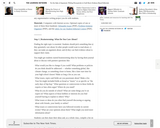
Suggestions on how to guide students through the writing process when writing editorials "” from brainstorming a topic to publishing their work "” and all the steps in between.
- Provider:
- New York Times
- Author:
- Michael Gonchar
- Date Added:
- 06/24/2019

Suggestions on how to guide students through the writing process when writing editorials "” from brainstorming a topic to publishing their work "” and all the steps in between.
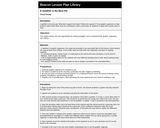
In this lesson, students will exercise a number of prewriting strategies to select facts for persuading an audience to agree with a given point of view.
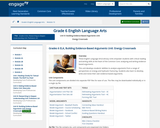
This unit develops students’ abilities to analyze arguments from a range of perspectives on energy and hydraulic fracturing. Students also learn to develop, write and revise their own evidence-based arguments.
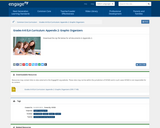
A Variety of Graphic Organizers to use in the classroom.
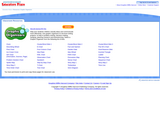
This resource contains a selection of different graphic organizers for students to use.

This expository text selection outlines the efforts of the Chinese people to build the Great Wall to protect them from the Mongol invaders and describes how the wall led to the eventual fall of the empire. In this CCSS lesson, students will explore this history through text dependent questions, academic vocabulary, and writing assignments.
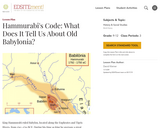
Students learn about life in Babylonia through the lens of Hammurabi's Code. This lesson is designed to extend world history curricula on Mesopotamia and to give students a more in-depth view of life in Babylonia during the time of Hammurabi.
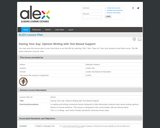
This reading and writing lesson is designed to help students learn about writing opinions based on textual evidence.

This resources details methods for supporting students through prewriting and drafting.
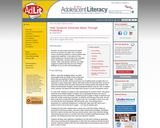
This article explains how to model a range of prewriting techniques and introduces several mnemonics to help students organize their writing.

This lesson examines the characteristics of Greek heroes and leads students to recognize references to Greek mythological heroes found in literature and culture today. Students will present analyses of heroes by defending their favorites in a slideshow presentation nominatting them for selection to a Heroes' Hall of Fame.
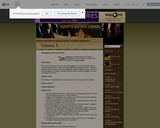
The focus of this lesson is on the use of hieroglyphs as a form of communication, record keeping, and as a means for preserving and passing down history. Students will learn basic information about the alphabet, common Egyptian words, and how to read hieroglyphic messages. Students will also practice using hieroglyphs to create messages of their own.

This resource includes nonfiction two texts, a link to a video, and 13 text-dependent questions (including one optional constructed-response prompt for students). Also includes explanatory information for teachers regarding alignment to the CCSS.
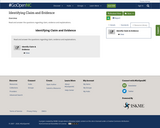
Read and answer the questions regarding claim, evidence and explainations.

In this lesson, students apply what they learn about the persuasive techniques used to sell products to write an advertisement of their own.
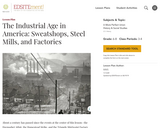
About a century has passed since the events at the center of this lesson-the Haymarket Affair, the Homestead Strike, and the Triangle Shirtwaist Factory Fire. In this lesson, students use primary historical sources to explore some of the questions raised by these events, questions that continue to be relevant in debates about American society: Where do we draw the line between acceptable business practices and unacceptable working conditions? Can an industrial-and indeed a post-industrial-economy succeed without taking advantage of those who do the work?
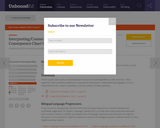
In this lesson, students will use the Cascading Consequences chart in order to create a visual map of the consequences of a particular choice or action.

John Henry competes against a steam drill in driving steel and proudly claims that he would sooner die than let a steam drill beat him. In this CCSS lesson, students will explore this story through text dependent questions, academic vocabulary, and writing assignments;
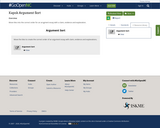
Move tiles into the correct order for an arugment essay with a claim, evidence and explanation.

In Jackie Joyner-Kersee's autobiography, she writes of the challenges she faced early on while becoming a track and field athlete. In this CCSS lesson students will explore Jackie Joyner-Kersee's life through text dependent questions, academic vocabulary, and writing assignments.